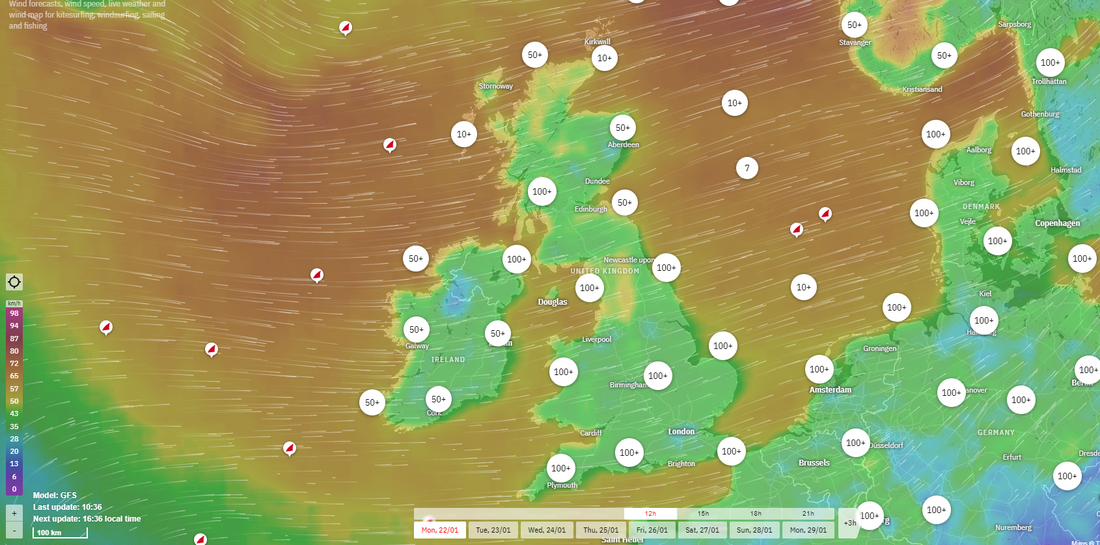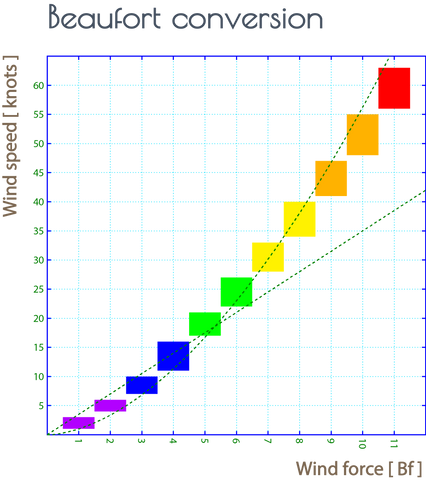The Brief BlogStephen Ogilvie InteriorsTrendsHelpTutorials
Ultimate Reference Guide to Wind Scales

When it comes to the natural world, there are few things as captivating and powerful as the wind. It dances through the trees, whispers secrets in our ears, and can even shape the landscape itself. But did you know that not all winds are created equal? Just like a masterpiece in a gallery, each type of wind has its own unique characteristics and qualities. In this exclusive guide, we will take you on a journey through the different types of wind scales, revealing their hidden beauty and power.
What is a Wind Scale?
Before we dive into the enchanting world of wind scales, let's first understand what they are. A wind scale is a system used to classify and measure the intensity of winds. It allows us to comprehend the strength and impact of these invisible forces of nature, much like a connoisseur appreciates the nuances of a fine wine.
The Descriptive Scale: Beaufort
It was devised in 1805 by Francis Beaufort of the British navy, it was originally calibrated by his somewhat arbitrary assessment on the effects of wind force on his vessel and the sea surface (1). It depicts the force of wind by a range of numbers from 0 to 12. It goes up to 17 but the last five numbers are only applied to tropical typhoons in areas around China and Taiwan (2).
Table 1. Beaufort scale of wind (modifed from 1)

Various attempts have been made to correlate the actual speed of wind to the table (1) but the Beaufort scale does not bear a simple relation to wind speed, as shown by the conversion graph below. The conversion does not even have a monotonously increasing step size. A power law (with power 1.75 for knots and 1.4 for m/sec, curved dashed lines) provides a valid approximation for the m/sec scale, but this is hardly practical. Linear approximations (straight dashed lines) do not fit more than 2-3 steps of the scale. (3)

Beaufort conversion table (modified from 3)
The scale is now rarely used by professional meteorologists, having been largely replaced by more objective methods of determining wind speeds—such as using anemometers, tracking wind echoes with Doppler radar, and monitoring the deflection of rising weather balloons and radiosondes from their points of release. (1)
The Beaufort scale has evolved into other versions to suit different applications. Amongst them we find "A Cruising Yachtman's Scale", "A Dinghy Sailor's Scale" and "A Coarse Sailor's Scale" with variations in definition depending upon the yacht, its crew and their lifestyle. Nonetheless, all these have a common feature: relating the wind to its effects on boats. (4)
The Roaring Gale: Fujita Scale
The Fujita Scale, named after the renowned University of Chicago meteorologist Dr. Tetsuya Fujita, measures the intensity of tornadoes and their destructive power. Like a masterpiece of abstract art, tornadoes are classified based on the damage they cause, ranging from a gentle brushstroke to a violent whirlwind that reshapes the landscape.
In a 1971 puplication titled "Proposed Characterization of Tornadoes and Hurricanes by Area and Intensity", Fujita laid out his scale to measure tornado intensity by linking estimated wind speeds to the Beaufort Wind Scale (above) and to the degree of damage that they caused. Fujita based the latter on the hundreds of tornado-damage surveys that he had conducted on the ground and from the air (5).
The Whispers of the Wind: Enhanced Fujita (EF) Scale
After three decades, adopted on February 01 2007, a team of experts re-worked the scale in order to define the correlation between destruction and wind speed.
The EF Scale primarily classifies tornadoes based on the damage left behind. By surveying the damage, scientists assign a wind speed that is likely to have caused that damage.
There are 28 categories and each contain its own degree of damage, threshold of visible damage and other multiple damage indicators before an EF scale is assigned to a tornado (5).
The Mighty Hurricane: Saffir-Simpson Scale
Prepare to be awestruck as we enter the realm of hurricanes. The Saffir-Simpson Scale, a true masterpiece in the world of wind scales, measures the strength and potential damage of these colossal storms. From the elegant swirl of a Category 1 hurricane to the devastating power of a Category 5, this scale allows us to appreciate the sheer force and majesty of these natural phenomena.
Called hurricanes when they develop over the North Atlantic, central North Pacific, and eastern North Pacific, these rotating storms are known as cyclones when they form over the South Pacific and Indian Ocean, and typhoons when they develop in the Northwest Pacific.

Whatever the moniker, tropical cyclones can annihilate coastal areas and cause massive death tolls. Rated on the five-point Saffir-Simpson scale based on wind speed, hurricanes are considered major when they reach category 3. A category 5 storm can deliver wind speeds of more than 253 kilometers (157 miles) an hour. (6)
Conclusion
Wind scales are used across different industries. For the purposes of this article, we briefly described the main scales available to inform our users in obtaining quality information for good decision-making when incurring costs for products that may be effected by wind, such as our Garden Parasols.
The maximum wind speed threshold is shown in all of our parasols, this is the maximum wind speed to which the parasols can be exposed. We also provide a useful link to wind speeds in your local area to smartly plan your barbeque or outside gathering event.
References
(1) Britannica, T. Editors of Encyclopaedia (2023, November 3). Beaufort scale. Encyclopedia Britannica. https://www.britannica.com/science/Beaufort-scale.
(2) National Geographic Society (2023, October 19). Beaufort scale. https://education.nationalgeographic.org/resource/beaufort-scale/
(3) Yachting Club CERN (2001, November 19). The Beaufort scale. https://yachting.web.cern.ch/yachting/courses/beaufort.html#:~:text=The%20Beaufort%20force%20numbers%2013,methods%20of%20determining%20wind%20speeds.&text=Conversions%20computed%20taking%201852%20m%20per%20nautical%20mile.
(4) The Weather Window (nd). Historical and Contemporary Versions of the Beaufort Scale. https://weather.mailasail.com/Franks-Weather/Historical-And-Contemporay-Versions-Of-Beaufort-Scales
(5) Koppes, Steve (nd). The Fujita Scale, explained. University of Chicago News. https://news.uchicago.edu/explainer/fujita-scale-explained
(6) National Geographic Society (2023, October 19). Hurricanes, Cyclones, and Typhoons Explained. https://education.nationalgeographic.org/resource/hurricanes-cyclones-and-typhoons-explained/
No comments

0 comments